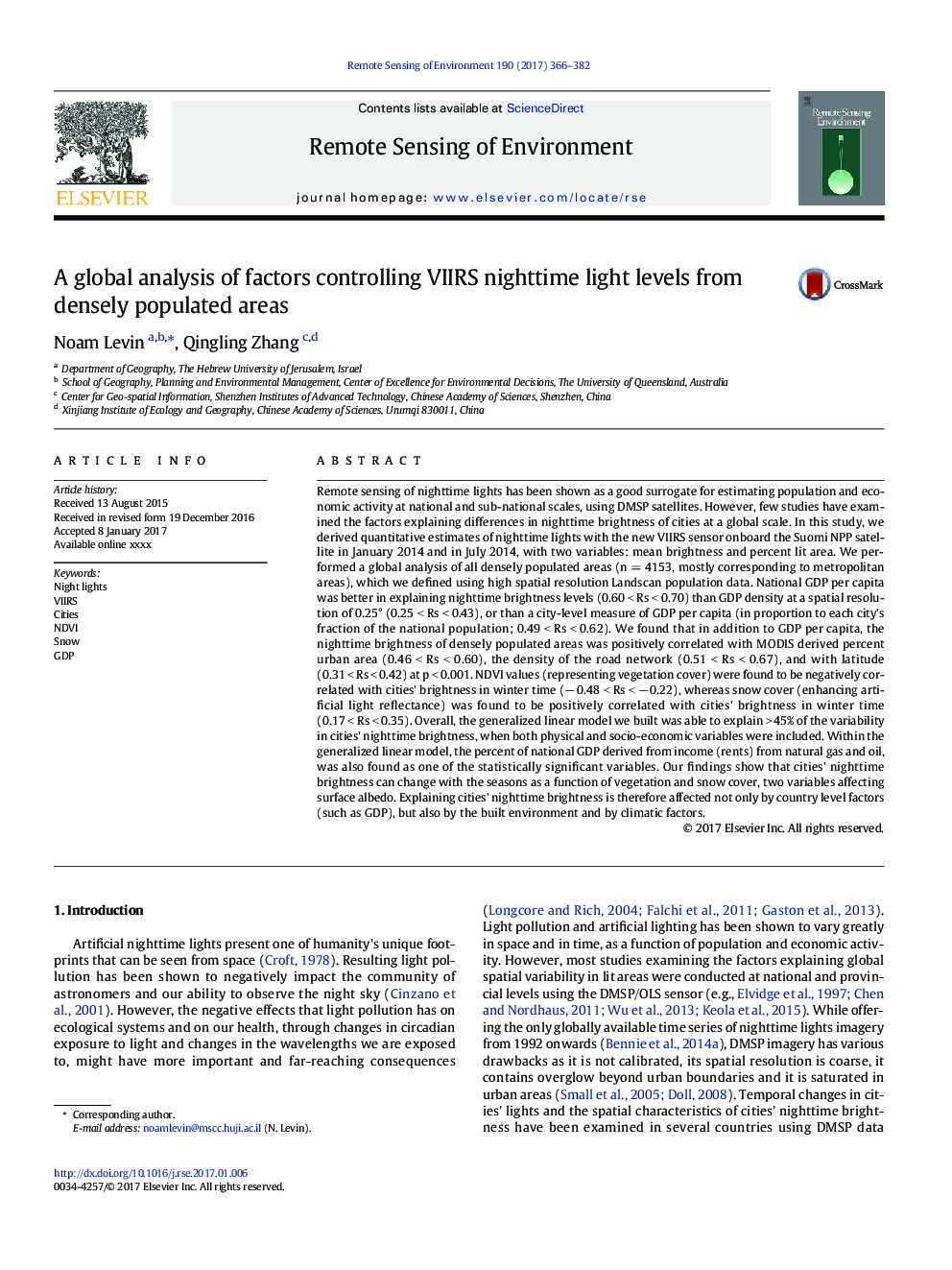| کد مقاله | کد نشریه | سال انتشار | مقاله انگلیسی | نسخه تمام متن |
|---|---|---|---|---|
| 5754795 | 1621210 | 2017 | 17 صفحه PDF | دانلود رایگان |
عنوان انگلیسی مقاله ISI
A global analysis of factors controlling VIIRS nighttime light levels from densely populated areas
دانلود مقاله + سفارش ترجمه
دانلود مقاله ISI انگلیسی
رایگان برای ایرانیان
کلمات کلیدی
موضوعات مرتبط
مهندسی و علوم پایه
علوم زمین و سیارات
کامپیوتر در علوم زمین
پیش نمایش صفحه اول مقاله

چکیده انگلیسی
Remote sensing of nighttime lights has been shown as a good surrogate for estimating population and economic activity at national and sub-national scales, using DMSP satellites. However, few studies have examined the factors explaining differences in nighttime brightness of cities at a global scale. In this study, we derived quantitative estimates of nighttime lights with the new VIIRS sensor onboard the Suomi NPP satellite in January 2014 and in July 2014, with two variables: mean brightness and percent lit area. We performed a global analysis of all densely populated areas (n = 4153, mostly corresponding to metropolitan areas), which we defined using high spatial resolution Landscan population data. National GDP per capita was better in explaining nighttime brightness levels (0.60 < Rs < 0.70) than GDP density at a spatial resolution of 0.25° (0.25 < Rs < 0.43), or than a city-level measure of GDP per capita (in proportion to each city's fraction of the national population; 0.49 < Rs < 0.62). We found that in addition to GDP per capita, the nighttime brightness of densely populated areas was positively correlated with MODIS derived percent urban area (0.46 < Rs < 0.60), the density of the road network (0.51 < Rs < 0.67), and with latitude (0.31 < Rs < 0.42) at p < 0.001. NDVI values (representing vegetation cover) were found to be negatively correlated with cities' brightness in winter time (â 0.48 < Rs < â 0.22), whereas snow cover (enhancing artificial light reflectance) was found to be positively correlated with cities' brightness in winter time (0.17 < Rs < 0.35). Overall, the generalized linear model we built was able to explain > 45% of the variability in cities' nighttime brightness, when both physical and socio-economic variables were included. Within the generalized linear model, the percent of national GDP derived from income (rents) from natural gas and oil, was also found as one of the statistically significant variables. Our findings show that cities' nighttime brightness can change with the seasons as a function of vegetation and snow cover, two variables affecting surface albedo. Explaining cities' nighttime brightness is therefore affected not only by country level factors (such as GDP), but also by the built environment and by climatic factors.
ناشر
Database: Elsevier - ScienceDirect (ساینس دایرکت)
Journal: Remote Sensing of Environment - Volume 190, 1 March 2017, Pages 366-382
Journal: Remote Sensing of Environment - Volume 190, 1 March 2017, Pages 366-382
نویسندگان
Noam Levin, Qingling Zhang,